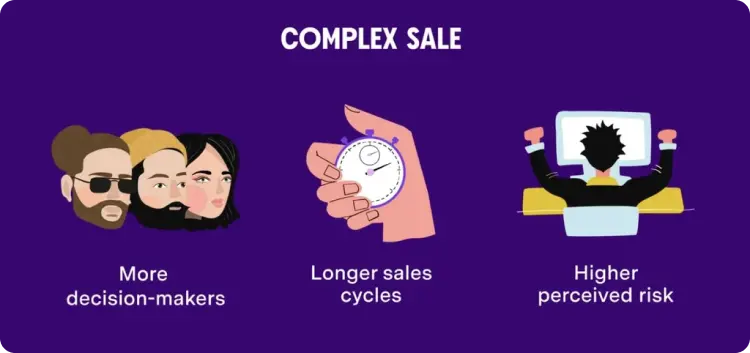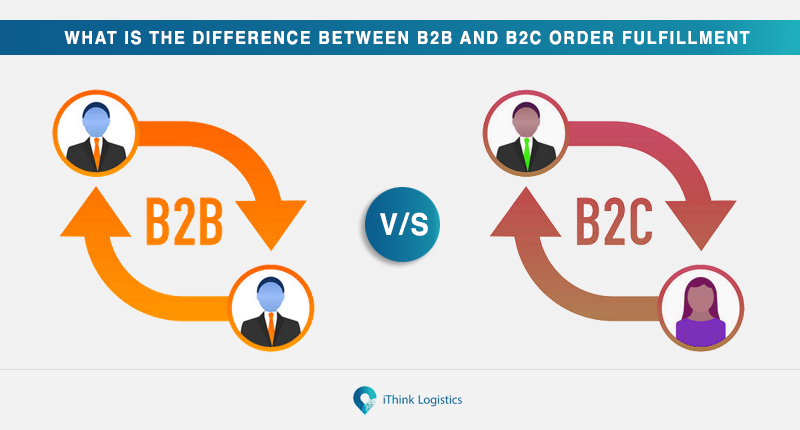Mastering the Maze: Turning Sales Complexity into Competitive Advantage with Seekit
In the swirling landscape of sales, complexity is not a burden to avoid but a challenge to embrace. Although complexity can be challenging, many of the highest value opportunities involve dealing with – and mastering – complexity to successfully land the deals – and reap the rewards.
Whether it’s B2B or B2C, the measure of the sales intricacy isn’t solely about what you sell or to whom. It’s about how you sell. Mastering the complexity of your sales process is a key opportunity for competitive advantage. If you have a complex sales process, so does your competitor. And that’s where the opportunity is: if you can more effectively manage the complexity of closing deals, you gain an advantage. Let’s take a closer look at the sources of complexity in sales, the challenges complexity creates, and a few ways to simplify your sales process to dominate in a complex sales environment.
Sales is an important part of every business – no matter how good your product is, if you can’t sell it effectively, your business won’t grow. However the product or solution being sold is often complex with hard to remember nuances or ambiguous customer needs. In some industries, prospect accounts themselves can be sprawling multi-team buying committees – adding further complexity to the process. Selling complex products to specialized customers often demands a sales team use a mix of creative thinking, systematic planning, and rock solid relationship building. This can make sales in the modern context as much as a science – especially when the complexity of the sale increases.
So how can modern sales teams conquer the complex sale? Complex selling grapples with the uncertain and undefined, a nebulous world of customer wants and needs against the backdrop of your unique business offerings. To understand how sales teams can dominate in a complex sales environment, you first need to understand the differences between simple and complex sales and where you lie on that spectrum. From there you can evaluate the opportunities to turn the sources of complexity into competitive differentiation. The next generation sales ecosystem has a simple solution for those caught in the web of complex sales – Seekit, a conversation intelligence toolkit that empowers you to navigate the complex sales processes.
So, what are the differences between complex and simple sales? Are you a complex seller?
The Landscape Of Sales: Simple Versus Complex
Broadly, sales can be categorized into a spectrum from simple to complex. In simple sales, we operate within a realm of the predictable and standardized. Simple sales involve the delivery of a standard good with predefined properties. Here, the focus is on asking the right questions and maintaining healthy customer relationships. Simple sales are by no means easy or straightforward – however the amount of “moving pieces”, decision points, customizations, stakeholders, etc, are usually lower than that of more “complex” sales.
Conversely, complex selling plunges into an intricate maze of client requirements and customizable solutions. The end product is often undefined or else highly customizable, and the salesperson’s role is to match customer needs with the business’s offerings. That act of clarifying a customer’s need and matching that to the specific services a business can provide is a key way that salespeople create value.
All sales rest on a spectrum from simple to complex – and the differences between the two ends of the spectrum can be broken down across three categories:
1. Ambiguity of the customer need – The second source of complexity in sales is the ambiguity or opaqueness of customer needs. Some products and services have very straightforward customer needs that can easily be identified and met. If a customer’s need is unambiguous, if they have a very discrete and tangible problem to be solved, it can be easy to articulate why they should buy a given product or service. On the other hand, some products aim to solve a set of ambiguous or abstract needs for a customer. It may be clear that there is a problem to solve – but understanding exactly what the customer wants and needs becomes a significant source of complexity in the process. In turn, helping the customer understand and articulate their need in order to drive a buying decision also becomes a complicated process due to the ambiguity of their needs.
2. Flexibility of the product – The first source of complexity in sales is the degree of flexibility or customizability of the product or solution being sold. Products that are standard commodities with little or no flexibility are often a more simple sale – there are fewer questions to ask, fewer decisions to make. As the customizability and flexibility of the product or solution offering increases, the sales process becomes more complex as a result of needing to navigate and negotiate the range of decisions.
3. Size of the buying committee – Finally, the size of the buying committee can increase the complexity of a sale. The buying committee is a term that refers to the sum total of individuals at a prospect account involved in closing a deal. For simple sales, this may just be one person. In such cases, the seller can focus all their efforts on discussing and understanding the needs of just one person – and when an agreement is reached with that one individual, the sale can close. Some products and services, however, require that the seller engage with a team of people – often from different departments across an organization – in order to close a deal. In these cases, the complexity of the sale often skyrockets as the seller must identify the differing and often conflicting needs of each individual involved. The more members of the buying committee involved in a deal, the more likely it is that the salesperson will need to spend significant time collecting and balancing perspectives from across the committee in order to close. This can be a source of significant complexity for the sale – often greatly increasing the time and cost to acquire a customer.
Although this list is not exhaustive – there are other sources of complexity in sales not mentioned here – this provides a system that can be used to evaluate how complex your sales process is and develop an appropriate strategy. To illustrate some of these differences, let’s consider three examples of sales that sit at different points on the spectrum from simple to complex sales: car sales (low complexity), general contracting home construction (medium complexity) and bespoke enterprise software (high complexity).
Auto Sales – Low Complexity Sales
Car sales are a strong example of relatively simple sales (which, as anyone who’s sold cars, is not to say it is an easy sale!). When selling a car, there is typically a small and well defined set of product offerings – the product has a low degree of flexibility. The customer can be given a succinct list of options- the make, model, trim levels, and various optional extras. This provides a clear checklist that a salesperson can go down with a customer helping them identify what they want, with little room for true bespoke customization. Often, the largest source of flexibility in the car sales process can be financing – where the terms and value can depend on many factors and offers a degree of customization that can increase complexity.
Second, the customer’s need in car sales is extremely unambiguous. They need a tangible object, a vehicle for transportation. Now, there is some degree of ambiguity in terms of what they are looking for – do they need a sports car, a family minivan, or a luxury SUV? But these needs are often straightforward and usually well known to the customer. There is little ambiguity in what the customer wants and needs so the salesperson can quickly ascertain how to direct them to the appropriate options to consider.
Third, the buying committee in car sales is typically very small – usually just one (or at most two) individuals. In this case, all of the details can be discussed with one point of contact. When the final decision is made, it does not require consultation with others. The sales person can focus their efforts on understanding and triangulating the needs of just one buyer – leading to a relatively low complexity deal.
All of these factors combine to make car sales a relatively simple sale. Although there are exceptions, this often means that a car sale can be completed in a short time – often just one or two days – with relatively minimal consternation on the part of the salesperson.
General Contracting Home Construction – Medium Complexity Sales
General Contracting home construction moves one step up in the complexity scale of sales. When selling home construction services, there is a wide range of undefined options available for the customer to choose from – the product has a high degree of flexibility. There are endless magazines of tile, paint, carpet choices, as well as near limitless kitchen and bathroom fixing options. And the overall architectural structure is bound only by the imagination – and budget – of the customer. This range of customizability dramatically increases the complexity of the sale. Instead of showing the customer the full list of options and letting the choose, sales people in the home design and construction space must go through the effort of winnowing down the range of possible options for a client – and often go back and forth many times to arrive at a final set of design choices. In this case, the sales person (often a sales team) works as a guide and curator – a much more complex and time consuming process,
increasing the complexity of the sale.
Next, the ambiguity of customer needs is somewhat higher in home construction and design. Although the customer may know that they want a home, and they may know how many bedrooms it should have, the rest is usually somewhat undefined. A customer may have a vague sense of their needs (‘I like a lot of natural light’ or ‘I like hardwood floors’) but translating those into a specific proposal that they accept can be quite difficult. As with the degree of customizability, the sales person often becomes an interpreter of customer needs. They are responsible for listening to what the customer says, asking the right questions, and then working with the design team to make adjustments to adjust the proposal. They often encounter situations where the customer doesn’t know what they want – or don’t want – until they see it. With this level of ambiguity, details can often slip through the cracks or go undiscovered until late in the process – which can delay or disrupt the completion of the sale.
Finally, the buying committee in general home contracting is also usually larger than in car sales. Although not always, there are often at least two people involved – typically a spouse – who have needs and desires that are somewhat different from the needs of the main point of contact. There may also be other family members who have their own, although lesser, voice in the design process. There may even be various real estate agents, inspectors, contractors or financiers involved who can further complicate the sales process by adding more voices and opinions. A sales person in this context needs to help orchestrate agreement among all parties involved – which can be a daunting and complex task. This higher degree of flexibility, ambiguity in the customer needs, and a larger buying committee drives a corresponding increase in the complexity – and duration – of the sale. As a result, home construction sales can often take weeks or months to be completed – all before construction can even begin. If this complexity is not managed, then at any point during that process things can go awry and derail the deal – potentially terminating or delaying the sale indefinitely.
Bespoke Enterprise Software – High Complexity Sales
Next, we can consider bespoke enterprise software as an example of the prototypical complex sale. In bespoke enterprise software, large businesses hire third parties to design, build and test software for their unique needs. In these cases, the realm of possible customizations is truly limitless. The customer typically has a large budget, and they can ask for nearly anything that could be built. For the sales person, this creates a stunning degree of complexity – determining what sorts of needs the customer has and turning those into proposals is a truly complex and custom process for each customer. There may be potential ways of reducing the scope of the flexibility in the sales process – referring to previous pieces of software the team had delivered or other existing software the customer may be looking to replicate can often help. But in practice, the sales team must work with the customer to narrow down the focus of potential features in a long and arduous process. Determining what feature requests are possible or not possible for a given budget usually requires a sales person to go back to their internal product development team repeatedly to ask questions. Often these conversations can be inconclusive or even incorrect – creating significant complications and threats to timelines and margin later in the process.
Similarly, customer needs are highly ambiguous in the sale of enterprise software. The customer may have a vague sense of the problem they are trying to solve – but the sales person needs to spend considerable time and effort, often over the course of weeks or months of meetings, to help the customer understand and fully articulate their need. There are often conflicting or countervailing needs that the sales team needs to help the customer understand and make a choice between. Complicating matters further, the customer’s needs may change or evolve in the course of a sale – often invalidating or replacing previously identified needs. This diverse, opaque and ever changing set of customer needs creates a high degree of complexity in the sales process – requiring very patient and detail oriented sales teams to make progress.
Finally, in bespoke enterprise software sales the buying committee is typically large and diverse, spanning multiple departments and potential user groups. It is not uncommon for a sales person to have to have introductions with more junior members of the department that will actually be using the software, before moving on to the head of the department, and then on to acquisitions, finance, technical and even legal teams at the company. Each team has its own desires and needs and the salesperson must play the role of herding cats to get them all to align on the deal. It can even be unclear who has the ultimate buying authority – this may not be fully defined within the target organization. Navigating this web of relationships to find the right threads to pull can be one of the most challenging and complex jobs a modern sales person can have – but the rewards of a multi-million dollar contract make it worth it.
You Versus Complexity
In this maze, the salesperson is a guide, a negotiator, and a relationship manager. They are responsible for aligning customer needs with what the business can deliver – a non-trivial task. This process often calls for marshaling internal resources and teams to ensure the smooth execution of the deal. Complex sales often puts salespeople in the driver seat – demanding that they charge ahead making sales – and then keeping the product or delivery team focused on providing what was promised to the customer.
The salesperson’s job is as much about uncovering the customer’s needs as it is about determining what can really be done by the company. Complex sales blur the line between sales and customer success, necessitating a meticulous track of what’s promised and a proactive approach to addressing issues.
The Challenges In Complex Sales
Complex selling demands complex sellers who can traverse the nuanced intricacies of their product’s features and their customer’s needs. Navigating this territory requires the seller to identify customer needs accurately, communicate these to their team, and guide the customer through this uncharted terrain.
Complex sales demand complex sellers – people who can navigate the labyrinth of their product’s features, customer needs, and the. The way you address the core challenges of a complex sale can make the difference between a multimillion-dollar deal or a missed opportunity. Complex sellers face the challenge of reliably identifying customer needs and communicating them to their team.
Identifying Customer Needs – The Labyrinth
The biggest challenge that complex sellers face is the ambiguity of customer needs and profiles. Buyers in complex sales usually have some core needs that are unambiguous. But they also have a litany of hard-to-articulate needs that are critical for the success of the deal.
Reliable identification and delivery of these needs is crucial. The customer’s hard-to-articulate needs are often overshadowed by the more evident ones. Failure to uncover these needs may lead to delayed or lost deals, frustrated customers, compromised margins, and jeopardized relationships.
Successful complex sellers often act as expert guides for the customer, helping them articulate their needs. This could involve tailoring offerings, providing customized features, or adding new integrations, each small element potentially pivotal to the overall success of the deal.
So how do complex sellers avoid the pitfalls? The strategy is twofold—acting as an expert guide for the customer and effectively using playbooks to guide the discussion. While domain expertise and sales playbooks can aid in this, it still presents challenges. Conversations that are overly scripted can seem unnatural to the buyer, while missed questions can lead to unmet or unexpected customer needs. Furthermore, processes designed to organize details and capture information about the deal can be time-consuming and error-prone administrative tasks can detract from customer engagement.
Embracing AI To Simplify Complex Sales
But what if there’s a solution that empowers sales teams to conquer the intricacies of complex sales without these downsides? Welcome to Seekit—an AI-powered sales tool designed to cut through complexity with minimal effort.
The sales ecosystem has begun to turn towards advanced artificial intelligence tools to help conquer the intricacies of complex sales. Seekit is a prime example, using cutting-edge technology to cut through the complexity of identifying customer needs in complex sales, without the overhead and errors common to traditional solutions.
Harnessing Seekit’s Potential
Seekit offers a suite of automated analyzers that can simplify the complex sales process. Here’s some examples of how Seekit works:
- Automated Analyzers: Seekit’s analyzers extract information from each conversation into an easy-to-use and shareable format. This high-fidelity insight into the conversation helps capture details about customer needs that might otherwise be forgotten or missed.
- Follow-up Guide: The playbook analyzer helps identify follow-up questions you may have missed, guiding the next step in the conversation. Automatically generated follow-up emails ensure that important questions and next steps get addressed. These can help you navigate and influence the right people in complex buying committees.
- Sales Prognosis: Seekit’s analyzers can identify if any topics or unmet needs are frustrating the customer, revealing opportunities for you to get ahead of an issue before it derails the deal. This can help articulate the ambiguous customer needs that complex sales often hinges on.
Closing the Deal: Seekit generates assets that not only help close the deal but also ensure ongoing success for the customer. The Proposal analyzer streamlines communication and ensures that all customer needs have been addressed accurately.
Conclusion: Embrace Simplified Complex Sales With Seekit
Tackling complex sales requires a combination of persistence, focus, and creativity. With Seekit’s arsenal of powerful tools, you’re not just responding to the challenge of complexity—you’re using it as a stepping stone to more successful sales. Because with the right tools and mindset, no challenge is insurmountable. Never allow complexity to become a stumbling block; make it your stepping stone.
Let Seekit turn the intricacies of complex sales into opportunities and the ambiguities into clarity, empowering you to close more deals with less effort. With Seekit, you can confidently move forward, knowing that you’re equipped to tackle the intricacies and seize opportunities in every sale – no matter how complex.
While complex sales will always pose challenges, armed with modern tools and a thorough understanding of the landscape, these hurdles don’t have to be insurmountable. Seekit offers a robust platform that makes navigating complex sales less daunting and more rewarding. Don’t just sell – seek, solve, and succeed with Seekit.






